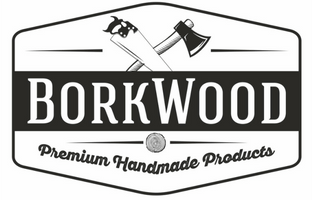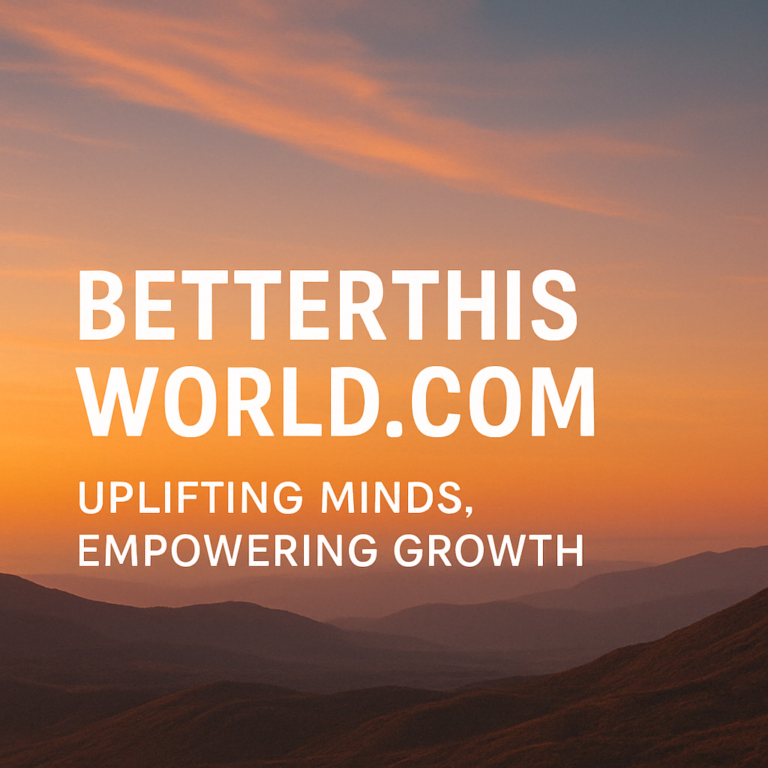Who Can Attend an International Conference in Canada: Everything You Need to Know
Canada’s vibrant cities frequently host international conferences, bringing together a diverse mix of knowledge and culture. There are plenty of opportunities for ideas and innovations to be shared at these events, whether they are held on the busy streets of Toronto or in the scenic views of Vancouver. If you’re wondering who can attend an international conference in Canada, the list is quite inclusive.
Professionals, researchers, entrepreneurs, students, and industry experts are all welcome. Some conferences might require registration or specific industry credentials, while others are open to the general public.
These gatherings are excellent opportunities for networking, gaining industry insights, and professional development. Read on to find out more about maximizing your experience at these dynamic events.
Who Can Attend an International Conference in Canada?

International conferences in Canada attract a diverse group of attendees, creating a hub for knowledge-sharing and networking. These events offer unique growth opportunities for professionals, researchers, students, and entrepreneurs. Some require registration or credentials, while others are open to the public. Let’s examine the types of people who can attend and what they gain:
Industry Professionals and Business Leaders
Experienced professionals join conferences to stay updated on trends and industry advancements. These events allow them to engage in discussions that shape their field. They connect with like-minded individuals, which leads to joint ventures and potential business opportunities.
Business leaders attend to explore market expansions, investment possibilities, and emerging innovations. Engaging with global experts provides valuable insights that help refine their business strategies. Many professionals use these gatherings to position themselves as industry thought leaders.
Researchers and Academics
Scholars and researchers participate in international conferences to present their findings to a global audience. Sharing their work allows them to receive constructive feedback and new perspectives. These events create opportunities for publishing research in esteemed journals.
Academic conferences promote interdisciplinary collaboration among researchers from various fields. Discussing ideas with experts from different backgrounds often sparks innovative solutions. Universities encourage faculty members to attend as part of their professional development.
Students and Aspiring Professionals
Students interested in expanding their knowledge attend conferences to gain industry exposure. They meet professionals who provide career guidance, mentorship, and real-world insights. Many events offer student discounts, making them accessible for learning and networking.
Young professionals benefit from attending as they transition into the workforce. Gaining first-hand knowledge from experts enhances their career prospects. Some conferences provide job fairs, internships, and networking sessions tailored for newcomers.
Entrepreneurs and Startups
Startups and business owners attend to showcase their ideas and innovations. These events offer a platform to attract investors and potential business partners. Pitching opportunities help emerging businesses secure funding and strategic partnerships.
Entrepreneurs gain inspiration from successful business leaders who share their journeys. Learning from failures and achievements helps in refining their strategies. Networking at conferences in Canada allows startups to expand their reach globally.
Government Officials and Policy Makers
Representatives of the government participate in the discussion of policies affecting industries and economies. These conferences serve as platforms for shaping regulations and global collaborations. Officials engage in dialogue with industry leaders, experts, and other policymakers.
It is important for policymakers to understand market trends in order to make informed decisions. Attending events focused on technology, healthcare, and trade enables them to stay updated. Public sector involvement ensures that regulations align with industry advancements.
Media and Press Representatives
Journalists and media professionals attend to cover industry news and trends. They report on groundbreaking innovations, expert insights, and key announcements. These conferences offer exclusive access to thought leaders and industry influencers.
Press members contribute by disseminating valuable information to the public. Covering expert discussions helps inform audiences about future developments. Many events provide press passes, allowing media professionals to cover multiple sessions.
Read also: American Entrepreneurs
General Enthusiasts and Lifelong Learners
Some conferences welcome attendees who simply have a passion for learning. Public lectures, exhibitions, and panel discussions offer knowledge without industry-specific requirements. These events inspire curiosity and provide inspiration beyond professional settings.
Lifelong learners benefit from engaging with diverse perspectives and ideas. Many conferences encourage participation from individuals eager to expand their horizons. Exploring new topics and fields enhances personal growth and global awareness.
What Do International Conferences in Canada Offer to Their Attendees?
Conferences in Canada offer an incredible opportunity for networking, career advancement, and learning. These events bring together experts, innovators, and thought leaders from around the world. Attendees gain access to unique opportunities that enhance their personal and professional growth.
- Valuable Networking Opportunities: Engaging with professionals, entrepreneurs, and academics helps attendees build strong industry connections. Meaningful discussions often lead to future collaborations, partnerships, and career advancements.
- Exposure to Industry Innovations: The latest research, emerging trends, and technological advancements are showcased at these conferences. Learning from industry pioneers keeps attendees ahead in their respective fields.
- Skill Development and Training: Workshops and interactive sessions offer hands-on experience with new tools and strategies. Attendees gain practical knowledge that enhances their expertise and professional growth.
- Access to Influential Speakers: Renowned experts and keynote speakers share insights into industry trends and global challenges. Their experiences inspire attendees to think differently and innovate.
- Opportunities for Research and Publication: Researchers and scholars can present their findings and receive constructive feedback from their peers. Many conferences offer publication opportunities in prestigious journals and platforms.
- Career and Business Growth: Job fairs, recruitment sessions, and investor meetings create pathways for professional and business expansion. The opportunity to attend opens up new possibilities for individuals and startups.
- Cultural and Global Exchange: Meeting professionals from diverse backgrounds fosters cross-cultural understanding and global collaboration. Exposure to different perspectives enriches both personal and professional development.
List of Things You Can Do to Be Prepared for the International Conference
Taking part in an international conference offers you the opportunity to learn, network, and grow professionally. You can maximize your experience by preparing properly. Here are essential checklist steps to get ready and maximize your conference benefits:
- Research the Event Details: You can plan your schedule more efficiently if you understand the conference agenda. The more you know about speakers, sessions, and topics, the better your experience will be.
- Register Early and Confirm Attendance: Securing your spot in advance prevents last-minute issues or missed opportunities. Double-checking registration details ensures smooth access to the event.
- Prepare an Updated Resume or Portfolio: When networking with recruiters and industry leaders, it is helpful to have professional documents ready. You have a greater chance of gaining collaboration or job offers when you showcase your skills.
- Plan Your Travel and Accommodation: Making travel and hotel bookings early ensures availability and cost savings. You can easily navigate the city if you research the venue’s location.
- Set Clear Goals and Objectives: You can keep your focus on important sessions by defining what you want to accomplish. Setting priorities ensures you gain maximum value from attendance.
- Bring Business Cards or Digital Contact Tools: Exchanging contact details easily helps build long-term connections. During interactions, networking apps or QR codes simplify information sharing.
- Prepare Thoughtful Questions for Speakers: The opportunity to engage with industry experts increases learning and makes a lasting impression. Well-prepared questions help spark insightful discussions during sessions.
- Dress Professionally and Comfortably: Wearing appropriate attire creates a confident and polished impression. Comfortable clothing ensures ease during long sessions and networking events.
- Stay Active on Social Media: It’s helpful to engage in discussions and hashtags related to events to increase visibility. Sharing key takeaways and insights positions you as an engaged attendee.
Tips to Expand Your Professional Network Through International Conference
Connecting with industry experts, peers, and potential collaborators is one of the best features of international conferences. It takes strategy, confidence, and an open mind to expand your professional network. Developing long-term relationships can benefit your career. Here’s how you can make the most of these networking opportunities.
Be Prepared With an Introduction
It is important to craft a brief yet engaging self-introduction in order to make a good first impression. Sharing your professional background and interests encourages meaningful conversations with attendees. You will be more confident and clear when you practice a concise elevator pitch. The more key talking points you prepare, the smoother and more impactful your interactions will be.
Engage in Conversations with Purpose
Approaching people with genuine curiosity helps establish stronger connections. A thoughtful question about their work shows interest and builds rapport naturally. Open discussions are more likely to take place when there is common ground. Being an active listener allows you to respond with relevant insights and ideas.
Attend Networking Sessions and Social Events
A structured networking activity provides an opportunity to meet professionals in a structured manner. Social events and informal gatherings allow for relaxed, natural conversations. Your exposure to various industry perspectives is broadened when you participate in different groups. Taking the initiative to introduce yourself can open doors to unexpected opportunities.
Use Social Media to Connect and Follow Up
Interacting with attendees through social media keeps conversations going beyond the event. New connections are strengthened when you follow up with a personalized message. The ability to engage with posts and updates shows a dedication to maintaining professional relationships. Sharing conference highlights and insights positions you as an active participant.
Offer Value to Others in Conversations
The benefits of networking are mutual when you provide helpful insights, resources, or connections. Offering assistance or advice builds trust and credibility within your industry. People are more likely to stay connected with you if you demonstrate your expertise. A genuine generosity of spirit in networking often leads to long-term partnerships that are valuable.
The Ways of Introducing to Strangers to Build a Strong Impression
Meeting new people at an international conference can feel overwhelming, but making a strong impression is essential. A confident and thoughtful introduction helps create meaningful connections. Using the following guide, you can leave a lasting impression on everyone you meet:
Step 1: Approach With Confidence and Positive Energy
A warm smile and open body language set the tone for a friendly interaction. Approaching with confidence makes others feel comfortable engaging with you. Maintaining eye contact shows attentiveness and builds immediate trust. A positive demeanor encourages others to respond warmly and continue the conversation.
Step 2: Start With a Genuine Greeting and Your Name
Using a simple yet engaging introduction helps break the ice naturally. Your name should be stated clearly so that the listener can easily remember you. A friendly greeting like “It’s great to meet you” sets a welcoming tone. Speaking at a steady pace keeps the introduction clear and professional.
Step 3: Share a Brief Background About Yourself
Mentioning your profession or area of expertise gives context to the conversation. Avoid overloading the listener with too much information by keeping it concise. An engaging introduction includes your passions or interests. It helps to relate your background to the event’s theme to stimulate relevant discussion.
Step 4: Show Interest in the Other Person’s Work
Asking about their profession or experience creates a balanced conversation. When you show curiosity about their journey, they are more likely to share more details with you. Responding with enthusiasm strengthens the connection and keeps the discussion flowing. By acknowledging their insights, you show them that you value and appreciate them.
Step 5: Find Common Interests or Shared Goals
Finding mutual interests builds an instant sense of connection. Relating your work or experiences to theirs keeps the conversation engaging. Shared goals create opportunities for potential collaboration or future discussions. Finding common ground makes the interaction more memorable and meaningful.
Step 6: Keep the Conversation Light and Engaging
Maintaining a natural and relaxed tone prevents the interaction from feeling forced. To create a comfortable atmosphere, it is important to use humor appropriately. Being mindful of body language ensures that you remain approachable. Allowing the conversation to flow naturally keeps both parties engaged.
Step 7: Close the Introduction with a Friendly Gesture
Exchanging business cards or LinkedIn details ensures you stay connected. Expressing gratitude for the conversation leaves a positive impression. A polite farewell like “I’d love to continue this discussion later” shows interest in future interactions. Ending on a friendly note increases the chances of building a lasting relationship.
Closing Remarks
The opportunity to learn, network, and grow your career is one of the many benefits of attending an international conference. To make the most of the experience, preparing thoroughly and introducing yourself confidently is key. It is equally important to ensure that your application is accurate, as errors can lead to delays or missed opportunities. If mistakes happen, following the right steps to correct them quickly is essential.
Understanding who can attend an international conference in Canada helps participants plan accordingly and meet the right requirements. Inaccuracies in applications could result in denied access or missed connections, so attention to detail is crucial. By being proactive, well-prepared, and engaged, attendees can maximize the benefits of these dynamic events.



